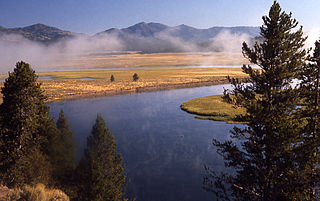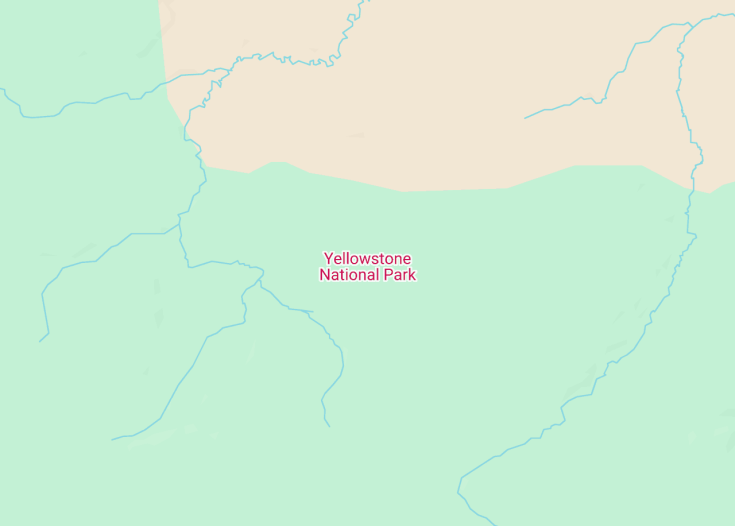Yellowstone National Park, established in 1872 as America’s first national park, is a captivating expanse of wilderness renowned for its geothermal features, including the iconic Old Faithful geyser. Spanning over three states – Wyoming, Montana, and Idaho, this nearly 3,500 sq mi park is a mosaic of geysers, hot springs, lush forests, and rugged mountains, supporting diverse wildlife such as wolves, bears, and herds of bison and elk. Yellowstone is not just a park but a profound reminder of the raw beauty and dynamic processes of the Earth.
Before venturing into the park, check the latest updates on weather conditions and trail closures to optimize your Yellowstone experience.
Considering the vast size of Yellowstone, planning a flexible itinerary with priority sites and activities can greatly enhance your visit and reduce unnecessary transit.
Top things to do & see in Yellowstone National Park
Select the following sights and activities to discover best tickets and tours available in Yellowstone National Park.
Yellowstone National Park: A Legacy Amidst Geysers
| Country | Wyoming (USA) |
| Time in Yellowstone National Park | GMT-6 |
| Language spoken | English |
| Population | Approximately 4,000 residents (Population data sourced from Wyoming Tourism Reports) |
| Currency | United States Dollar (USD $) |
| Airports |
|
Yellowstone National Park, sprawling across the vast expanse of Wyoming, is renowned as the United States’ first national park, established in 1872. This spectacular destination offers a unique glimpse into vibrant geothermal activity, diverse wildlife, and breathtaking landscapes. With over 2.2 million acres to explore, visitors can wander through vast meadows, dense forests, and alongside serene lakes. The park’s hallmark, Old Faithful, never fails to impress with its timely geyser eruptions, a spectacular display of nature’s force.
From geysers shooting boiling water many feet into the air, to multicolored hot springs like the Grand Prismatic Spring, Yellowstone provides a taste of geological phenomena not seen anywhere else on such a large scale. Beyond its geothermal wonders, the park is a sanctuary for wildlife including grizzly bears, wolves, bison, and elk. Throughout its vast landscapes, it preserves a complex ecosystem wherein each element, from the smallest insect to large predators, plays a role in the health of the environment.
History buffs will appreciate Yellowstone’s rich tapestry woven with Native American heritage, pioneering explorer adventures, and conservation stories that led to the birth of the National Park Service. Educational programs and guided tours enhance visitor experiences, offering deeper insights into Yellowstone’s complex ecological and geological systems.
With millions visiting each year, Yellowstone continues to inspire and awaken awe with its natural beauty and complex biodiversity, proving why it remains a symbolic cornerstone in the narrative of American wilderness conservation.
Where is Yellowstone National Park?
Yellowstone National Park is located in the northwest corner of Wyoming, extending slightly into Montana and Idaho.
Distances:
| Route | Distance by car | Time by car |
|---|---|---|
| Cheyenne, WY to Yellowstone | 498 miles | Approx. 8 hours |
| Boulder, WY to Yellowstone | 331 miles | Approx. 5 hours 45 minutes |
What is Yellowstone National Park famous for?
Yellowstone is most famous for its geothermal features, like the iconic Old Faithful geyser and vibrant hot springs, and its role in the establishment of the National Park Service.
History
Pre-1800s: Early Native American Presence
Before the establishment of Yellowstone National Park, Native American tribes, such as the Shoshone, Crow, Blackfoot, Bannock, and Nez Perce, had been utilizing the region for thousands of years. They ventured into what is now Yellowstone for hunting, gathering, and spiritual purposes, drawn by its abundant wildlife and geothermal features which were considered sacred. The park’s landscape, with its vast forests and expansive waters, played a significant role in the culture and survival of these early inhabitants.
1800s: Exploration and Foundation
The first detailed accounts of the Yellowstone area emerged with the expeditions of the early 19th century. Notably, the Lewis and Clark Expedition (1804-1806) skirted the edges of what would later become the park. The most influential exploration came in 1871, led by geologist Ferdinand Vandeveer Hayden. His detailed descriptions and the stunning photographs by William Henry Jackson showcased Yellowstone’s unique features to the wider world. Influenced by these revelations, the U.S. Congress moved to establish Yellowstone as the first national park in 1872, a pioneering step in the global conservation movement.
1900s: Developments and Conservation Efforts
Yellowstone National Park underwent significant transformations in the 20th century. The park saw the construction of roads, lodges, and other infrastructure to accommodate an increasing number of visitors. Efforts to preserve and protect its natural resources were strengthened, particularly under the influence of the National Park Service, established in 1916. The mid-century brought about a new philosophy of managing national parks as ecosystems, a direction influenced by scientific research and environmental awareness.
2000s to Present: Modern Challenges and Achievements
In recent decades, Yellowstone has faced numerous challenges including climate change, increasing visitor numbers, and wildlife management issues. Despite these, the park has made significant strides in habitat restoration and species reintroduction, such as the successful return of the gray wolf. Today, Yellowstone remains a symbol of natural beauty and conservation success, continuing to inspire visitors from around the globe with its dynamic ecosystems and commitment to environmental preservation.
Visit Yellowstone National Park
What to see and do in Yellowstone National Park
Yellowstone National Park offers a plethora of natural wonders and activities. Visitors can explore over 300 geysers, including the iconic Old Faithful, and marvel at the vibrant colors of the Grand Prismatic Spring. The park’s vast wilderness is home to an impressive array of wildlife, such as bears, wolves, bison, and elk. For those keen on hiking, Yellowstone has hundreds of miles of trails ranging from easy walks to challenging backcountry treks. Fishing enthusiasts can enjoy angling in the park’s many lakes and rivers, renowned for their trout populations.
- Geothermal features exploration
- Wildlife watching
- Hiking and backpacking
- Fishing
- Photography and art tours
Annual Events in Yellowstone National Park
Yellowstone hosts several events throughout the year that celebrate its natural heritage and cultural history. The ‘Yellowstone Winterfest’ takes place in January, offering activities like snowshoeing and wildlife watching. In the summer, visitors can experience the ‘Yellowstone Plein Air Fest,’ where artists capture the park’s beauty on canvas. The ‘Fall Photo Festival’ in September is a highlight for photographers aiming to capture the autumnal transformation.
Best time to visit Yellowstone National Park
The ideal times to visit Yellowstone are during the late spring (May and June) when the wildflowers bloom, and the early fall (September and October) when the summer crowds have thinned and the forest turns into vibrant colors. These periods offer milder weather and the opportunity to see the park’s wildlife become more active in the cooler temperatures.
Is Yellowstone National Park worth visiting?
Yellowstone National Park is undeniably a treasure worth visiting. Its stunning geological features, abundant wildlife, and vast landscapes offer a unique experience that is difficult to find elsewhere. However, the park’s popularity can lead to crowded attractions and requires advanced planning, especially during peak summer months. Visitors should also be prepared for the rustic and sometimes harsh natural conditions of a wilderness area. Despite these challenges, the rewards of witnessing Yellowstone’s wonders are immense, making it a must-visit destination for nature lovers and adventure seekers alike.











